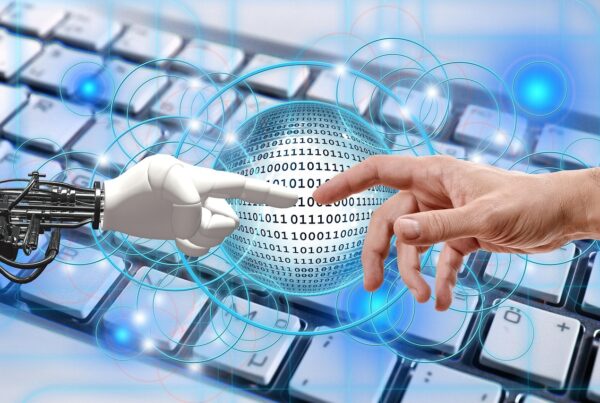#AI@Work: Intelligent VR & AI
VR becomes intelligent when it is enhanced with AI. With AI it can interact with and respond to actions, voice and even intent. It can provide support and guidance on the journey through VR. This helps the learner to align with the learning objectives. Learners can be confused or overwhelmed. VR agents may also provide alternative views, feedback, questions and perspectives. Emerging AI in VR has been researched. It is proven to provide enhanced educational outcomes. It supports learners being able to construct their own understanding and explore (Luckin, et al., 2016)
Augmented Reality (AR) Systems go one step beyond VR. AR allows learners and instructors to interact differently with the world around them. AR can support physical and emotional well-being. It can also support cognitive development (Luckin, et al., 2016). AR combines computer-generated information with the learner’s view of the real world. It provides an aggregated view. It works with vision-based recognition algorithms. It is based on sensory input. It enhances reality with sound, video, graphics and other inputs using a computer or a mobile device.
In Universal Design (UD) learners receive different kinds of support for their own learning. They can choose the pathways and strategies customized to their needs. AI has the potential to be very important in UD. AI can support learning environments that offer many different didactic approaches. AI can offer multiple versions of the material. It can offer multiple explanations, adaptive interpretation and a variety of learner support tools. AI has the potential to address all three neural networks usually associated with UD. This includes recognition of “what” learners learn, prior knowledge and their feelings. UD also impacts the motivation to learn.
The penetration of AI into the workforce, on whatever the scale, implies the necessity for continuous learning. The new “Agile Workplace” will require unprecedented access to training materials and instruction on new roles and jobs. Workers will need to update their skills regularly. They will need to move into and out of new professions and positions. As more and more jobs become automated, workers will need to retrain for positions (Baggio & Omana, 2019).
#AI@Work, #WFH, #Virtual Touchpoints, #ThePajamaEffect, #The Visual Connection, #BobbeGB, #BobbeBaggio, #Touchpoints, #Remote Workplace, #WorkFromHome, #PJEffect, #LinkedInNewsLive




